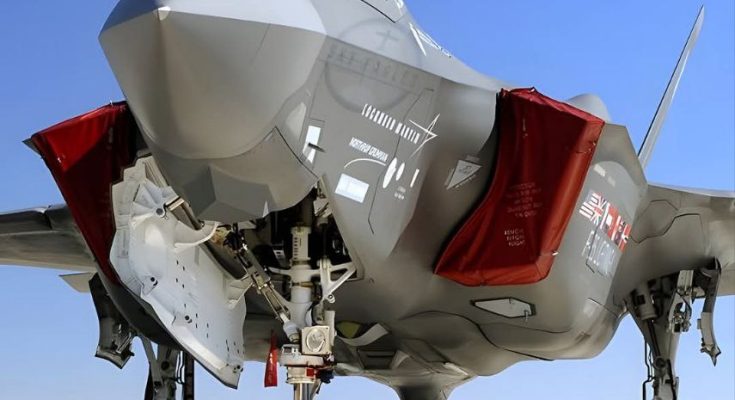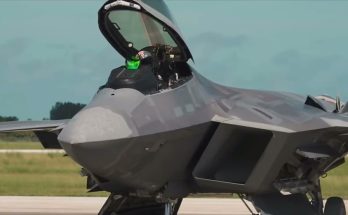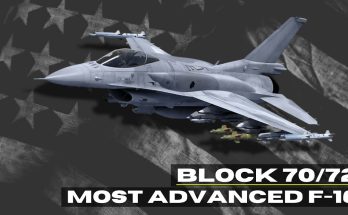The F-35 Lightning II, developed by Lockheed Martin, is one of the most advanced multirole stealth fighters in the world, designed to fulfill a wide range of combat and operational roles. With its cutting-edge technology, stealth capabilities, and versatility, the F-35 has revolutionized air superiority, ground attack, and intelligence, surveillance, and reconnaissance (ISR) missions. It is the cornerstone of modern air forces, and its ability to perform across multiple domains has made it a critical asset for numerous nations worldwide.
The Evolution of the F-35
The F-35 was developed as part of the Joint Strike Fighter (JSF) program, which was initiated in the 1990s by the United States Department of Defense. The goal was to produce a versatile, cost-effective fighter that could meet the needs of the U.S. Air Force, Navy, and Marine Corps, as well as allied forces. Unlike traditional fighters that were optimized for specific roles, the F-35 was designed to excel in multiple combat scenarios. The result is a fighter capable of performing a variety of missions, including air superiority, close air support, precision strike, and reconnaissance.
The F-35 is available in three variants: the F-35A for the U.S. Air Force and allied air forces, the F-35B for short takeoff and vertical landing (STOVL) operations, which is used by the U.S. Marine Corps and other nations with amphibious assault ships, and the F-35C, designed for carrier operations with the U.S. Navy.
Stealth and Superiority in the Skies
At the heart of the F-35’s capabilities is its advanced stealth technology, which significantly reduces its radar cross-section (RCS) and makes it difficult for enemy radar systems to detect and track the aircraft. This allows the F-35 to operate in contested airspace without being easily detected, providing a strategic advantage in air superiority missions. Its low observability is achieved through a combination of radar-absorbing materials, careful shaping, and advanced coatings that help evade enemy radar and infrared tracking systems.
The F-35 also incorporates cutting-edge avionics and sensor fusion, making it a game-changer in air combat. The aircraft is equipped with an active electronically scanned array (AESA) radar, which offers superior detection and tracking capabilities, allowing the pilot to engage multiple targets at once. This radar, combined with other sensors such as the Distributed Aperture System (DAS) and the Electro-Optical Targeting System (EOTS), provides the pilot with a 360-degree view of the battlefield. These systems can detect threats well beyond visual range, providing the pilot with a comprehensive situational awareness advantage over adversaries.
The F-35’s stealth combined with its advanced sensors allows it to achieve air superiority not just by evading detection, but also by outmaneuvering and outsmarting enemy aircraft. Its agility and advanced avionics allow the pilot to make rapid decisions and respond to threats with unmatched precision.
Multirole Capability and Versatility
Beyond air superiority, the F-35’s multirole capabilities make it an invaluable asset for modern warfare. Its ability to perform precision strike missions with a variety of air-to-ground weapons, including guided bombs and missiles, gives it a significant edge over traditional fighter aircraft. The F-35 can destroy high-value targets with incredible accuracy while remaining undetected, thus minimizing the risk to both the aircraft and friendly forces.
The F-35’s advanced targeting systems, combined with its stealth features, also make it ideal for close air support (CAS) missions, where it can provide direct support to ground forces in hostile environments. Additionally, the aircraft is capable of intelligence, surveillance, and reconnaissance (ISR) missions, providing real-time data to commanders on the ground and in the air, enhancing operational effectiveness and battlefield awareness.
Moreover, the F-35 is designed to be highly interoperable with allied forces, making it a key player in coalition operations. Its advanced data-sharing capabilities allow it to seamlessly communicate with other aircraft, ground stations, and naval platforms, creating a networked force that can adapt to rapidly changing combat conditions.
Future and Global Impact
Since its introduction, the F-35 has been adopted by numerous countries, including the United States, the United Kingdom, Israel, Japan, and several NATO allies. Its presence is reshaping the global balance of air power and strengthening the capabilities of nations that operate it. As the F-35 continues to be integrated into more air forces, it is expected to remain the backbone of modern air combat for decades to come.
In addition to its military applications, the F-35 is being continually upgraded with software and hardware improvements to maintain its edge over adversaries. These upgrades include enhanced sensors, electronic warfare capabilities, and increased weapons loadouts, ensuring the F-35 remains a dominant force in air combat.
Conclusion
The F-35 Lightning II represents a breakthrough in military aviation. With its stealth, advanced avionics, multirole capabilities, and superior combat performance, it has become the definitive fighter aircraft of the 21st century. Whether in air superiority missions, precision strike operations, or ISR tasks, the F-35 provides the U.S. and its allies with an unmatched advantage. Its continued evolution and integration into global air forces will ensure it remains the cornerstone of air combat for decades to come, securing its place as one of the most important and feared fighter jets in the world.



